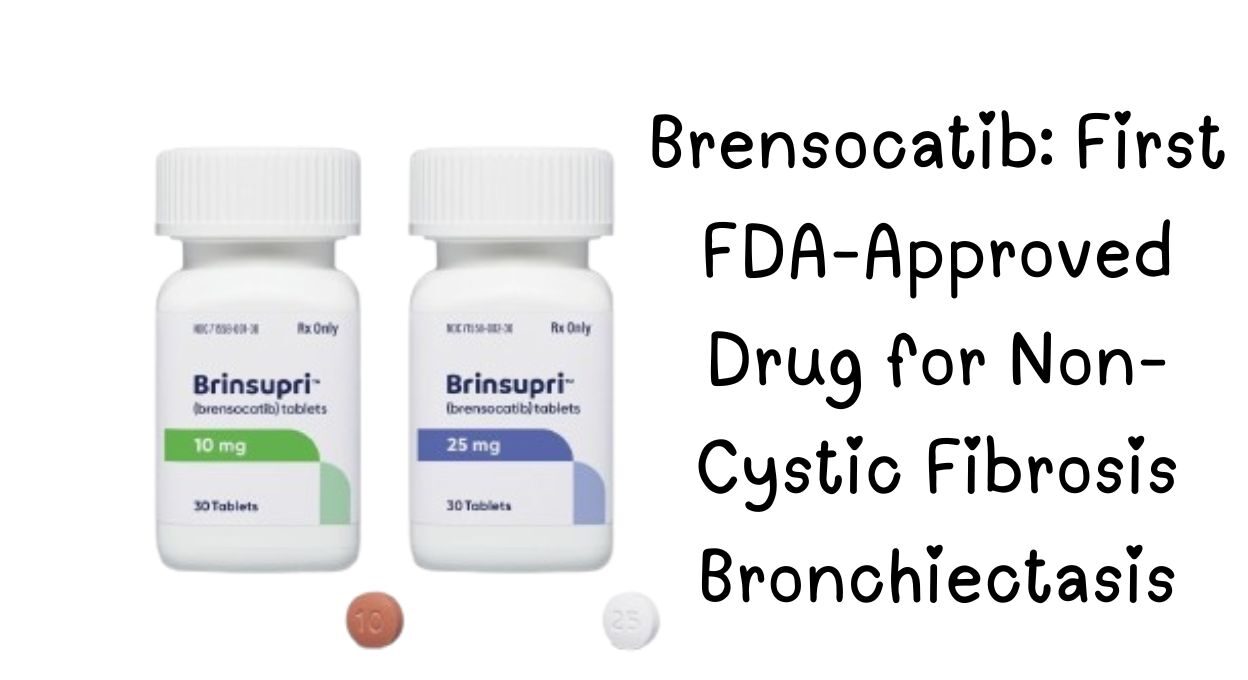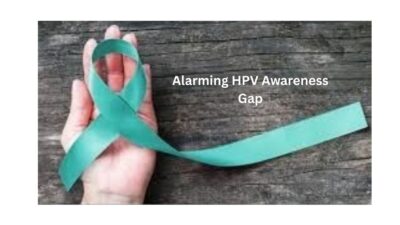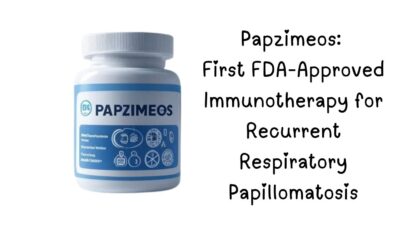What is Brinsupri (Brensocatib)?
Brinsupri (Brensocatib) is the first FDA-approved treatment for non-cystic fibrosis bronchiectasis (NCFB). It is an oral DPP1 inhibitor that reduces airway inflammation by targeting neutrophil activation.
Key Features
✔ First-in-class DPP1 inhibitor
✔ Once-daily oral tablet (10mg or 25mg)
✔ Reduces exacerbations by 21% (ASPEN trial)
✔ Approved for ages 12+
Table of Contents
How Brinsupri Works?
Brinsupri inhibits dipeptidyl peptidase 1 (DPP1), an enzyme that activates neutrophil serine proteases. This leads to:
- Reduced neutrophil inflammation in airways
- Fewer exacerbations (flare-ups)
- Slowed lung function decline
Mechanism Breakdown
| Target | Effect | Outcome |
|---|---|---|
| DPP1 enzyme | Inhibits neutrophil activation | Less airway damage |
| Neutrophil proteases | Reduces enzyme release | Decreased mucus & inflammation |
| Chronic inflammation | Breaks cycle of infection & flare-ups | Fewer hospitalizations |
Clinical Trial Results (ASPEN & WILLOW Studies)
Efficacy Data
| Metric | Brinsupri 10mg | Brinsupri 25mg | Placebo |
|---|---|---|---|
| Exacerbation Reduction | 21.1% | 19.4% | Baseline |
| Time to First Exacerbation | Significantly longer | Significantly longer | Shorter |
| Exacerbation-Free Patients | Higher % | Higher % | Lower % |
| FEV₁ Decline at 52 Weeks | Less decline | Statistically significant improvement | Faster decline |
Safety Profile
Common Side Effects (≥2%):
- Upper respiratory infection
- Headache
- Rash, dry skin, hyperkeratosis
- Hypertension
Rare but Serious Risks:
- Gingivitis & periodontal issues
- Liver enzyme elevations
- Skin cancer (1.9% in 25mg group)
Who Can Take Brinsupri?
✅ Adults & children (12+) with NCFB
✅ Patients with ≥2 exacerbations/year
❌ Not for cystic fibrosis-related bronchiectasis
Dosage Options
- 10mg tablet (for moderate cases)
- 25mg tablet (for severe/recurrent exacerbations)
Availability & Cost
- Now available in U.S. via specialty pharmacies
- Expected in EU/UK (2026), Japan filing planned
- Cost: Not yet disclosed (check Insmed’s inLighten Patient Support Program for assistance)
Brensocatib Side Effects
Based on Phase 3 ASPEN trial data:
- Upper respiratory tract infections (cold-like symptoms)
- Headache
- Skin reactions:
- Rash
- Dry skin
- Hyperkeratosis (thickened skin)
- Hypertension (high blood pressure)
- Gingival/periodontal issues (gum inflammation)
Less Common But Serious Risks
1. Dermatologic Reactions
- Frequency: 5-10% of patients
- Types:
- Eczema-like rashes
- Skin thickening
- Rare cases of skin cancer (1.9% in 25mg group)
- Management:
- Regular skin checks
- Dermatologist referral for persistent rashes
2. Oral Health Complications
- Reported in 8-12% of patients
- Includes:
- Gingivitis
- Periodontitis
- Tooth/gum pain
- Prevention:
- Dental exams every 6 months
- Strict oral hygiene
3. Liver Enzyme Elevations
- Occurrence:
- ALT/AST >3x ULN: 0.5-1.2%
- Alkaline phosphatase >1.5x ULN: 2.5-4.1%
- Monitoring:
- Baseline liver tests
- Repeat at 3/6/12 months
4. Other Notable Effects
- Alopecia (hair loss) – 1.5-1.6%
- Hypertension – 3-5%
- Increased infection risk (avoid live vaccines)
SOURCE Insmed Incorporated
FAQ About Brensocatib
1. How does Brinsupri differ from current bronchiectasis treatments?
Answer: Brinsupri is the first drug targeting DPP1 to reduce neutrophilic inflammation, while current therapies only manage symptoms (antibiotics, mucus clearance).
2. How long does Brinsupri take to work?
Answer: In trials, exacerbation reduction was seen within 24 weeks, with lung function benefits at 52 weeks.
3. Can Brinsupri cure bronchiectasis?
Answer: No—it slows progression and reduces flares but doesn’t reverse existing lung damage.
4. What monitoring is needed on Brinsupri?
Answer: Regular dermatologic checks (for rash/skin cancer) and dental visits (for gum health).
5. Will insurance cover Brinsupri?
Answer: Most insurers will cover it, but copay assistance is available through Insmed’s inLighten program.



